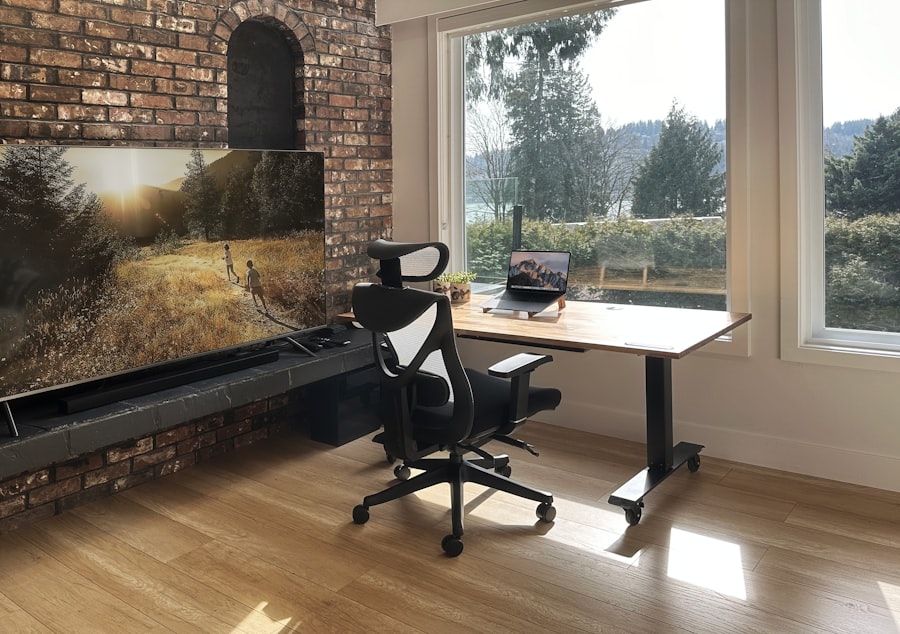Ergonomics, a discipline that merges the science of human anatomy with the principles of design, plays a pivotal role in enhancing workplace efficiency and comfort. At its core, ergonomics seeks to optimize the interaction between individuals and their work environment, ensuring that tasks, equipment, and workspaces are tailored to fit the capabilities and limitations of the human body. Optimizing workstation health and safety not only aims to improve productivity but also to minimize the risk of injury and discomfort.
In an era where many employees spend prolonged hours at desks, understanding the principles of ergonomics has become increasingly essential. By recognizing how physical strain can lead to musculoskeletal disorders, organizations can take proactive measures to create a healthier work environment. Moreover, the implications of ergonomics extend beyond mere physical comfort; they encompass psychological and emotional well-being as well.
A well-designed workspace can significantly reduce stress levels, enhance job satisfaction, and foster a sense of belonging among employees. When workers feel comfortable and supported in their environment, they are more likely to engage fully with their tasks and contribute positively to the organizational culture. Thus, understanding ergonomics is not just about preventing injuries; it is about cultivating a holistic approach to employee welfare that acknowledges the intricate relationship between physical space and mental health.
Key Takeaways
- Ergonomics in the workplace focuses on designing the work environment to fit the needs of the worker, promoting comfort and productivity.
- An ergonomically friendly workstation includes an adjustable chair, proper desk height, and adequate lighting to reduce strain on the body.
- Taking regular breaks and incorporating movement throughout the workday can help prevent musculoskeletal disorders and improve overall health.
- Proper use of technology and equipment involves positioning screens at eye level, using ergonomic keyboards and mice, and adjusting chair and desk height for optimal comfort.
- Implementing good posture and body mechanics involves sitting with feet flat on the floor, keeping the back straight, and avoiding slouching or leaning to one side.
Creating an Ergonomically Friendly Workstation
Designing an ergonomically friendly workstation involves a careful assessment of various elements that contribute to an employee’s comfort and efficiency. The first step is to evaluate the desk height, ensuring that it allows for a neutral wrist position while typing. Ideally, the elbows should be at a 90-degree angle, with feet flat on the floor or on a footrest.
The chair should provide adequate lumbar support, promoting a natural curve in the lower back. Additionally, the monitor should be positioned at eye level to prevent neck strain, with the top of the screen aligned with the user’s line of sight. By making these adjustments, employers can significantly reduce the risk of repetitive strain injuries and enhance overall productivity.
In addition to physical adjustments, incorporating ergonomic accessories can further enhance workstation comfort. Items such as keyboard trays, adjustable monitor stands, and ergonomic mice can help create a more adaptable workspace tailored to individual needs. Furthermore, encouraging employees to personalize their workstations with plants or personal items can foster a sense of ownership and comfort.
This personalization not only makes the workspace more inviting but also contributes to a positive atmosphere that can boost morale. Ultimately, creating an ergonomically friendly workstation is about more than just compliance with safety standards; it is about fostering an environment where employees can thrive both physically and mentally.
Importance of Regular Breaks and Movement

In today’s fast-paced work culture, the importance of regular breaks and movement cannot be overstated. Continuous periods of sitting can lead to a host of health issues, including obesity, cardiovascular disease, and musculoskeletal disorders. Research has shown that taking short breaks throughout the day can significantly enhance focus and productivity.
These breaks allow employees to step away from their screens, stretch their muscles, and recharge their mental batteries. Simple activities such as walking around the office or performing light stretches can invigorate both body and mind, leading to improved performance upon returning to work. Moreover, integrating movement into the workday promotes a culture of wellness that benefits both employees and employers alike.
Organizations that encourage regular breaks often see reduced absenteeism and increased job satisfaction among their workforce. By fostering an environment where movement is valued, companies can cultivate a more engaged and motivated team. Additionally, implementing structured break times or wellness programs that include physical activity can further reinforce this culture.
Ultimately, prioritizing regular breaks and movement is not merely a suggestion; it is a vital component of a healthy workplace that supports long-term employee well-being.
Proper Use of Technology and Equipment
| Technology and Equipment | Metrics |
|---|---|
| Number of employees trained in technology use | 200 |
| Percentage of equipment maintenance completed on schedule | 95% |
| Number of technology-related incidents reported | 10 |
| Percentage of employees using updated software | 80% |
In an increasingly digital world, the proper use of technology and equipment is paramount for maintaining ergonomic integrity in the workplace. With many employees relying heavily on computers and other devices for their daily tasks, understanding how to use these tools effectively is essential for preventing strain and injury. For instance, positioning keyboards and mice within easy reach can help maintain a neutral wrist position while typing or navigating.
Additionally, utilizing features such as voice recognition software or ergonomic keyboards can alleviate some of the physical demands placed on workers during prolonged computer use. Furthermore, it is crucial for organizations to provide training on the proper use of technology and equipment. Employees should be educated on how to adjust their devices for optimal comfort and efficiency.
This includes understanding how to set up their monitors at eye level, using adjustable chairs correctly, and employing tools like document holders to minimize neck strain when referencing printed materials. By equipping employees with the knowledge they need to use technology safely and effectively, organizations can create a more ergonomic workplace that prioritizes health while maximizing productivity.
Implementing Good Posture and Body Mechanics
Good posture and body mechanics are foundational elements of workplace ergonomics that significantly impact employee health and productivity. Maintaining proper posture while sitting or standing helps distribute body weight evenly across joints and muscles, reducing strain on specific areas such as the back, neck, and shoulders. Employees should be encouraged to sit with their backs straight against their chairs, feet flat on the ground, and shoulders relaxed but not slouched.
Additionally, when lifting objects or performing manual tasks, using proper body mechanics—such as bending at the knees rather than at the waist—can prevent injuries and promote overall physical well-being. Moreover, fostering an awareness of posture extends beyond individual practices; it requires a cultural shift within organizations. Employers can promote good posture by providing resources such as workshops or informational materials that educate employees about its importance.
Regular reminders about posture during meetings or through internal communications can also reinforce this message. By creating an environment where good posture is prioritized and practiced collectively, organizations can significantly reduce the incidence of musculoskeletal disorders while enhancing overall workplace morale.
Addressing Environmental Factors in your Workstation health and safety

The physical environment in which employees work plays a crucial role in their overall health and productivity. Factors such as lighting, temperature, noise levels, and air quality can significantly impact comfort and performance. For instance, inadequate lighting can lead to eye strain and headaches, while excessive noise can disrupt concentration and increase stress levels.
Organizations must assess these environmental factors regularly to ensure they meet ergonomic standards conducive to employee well-being. Implementing solutions such as adjustable lighting options or sound-absorbing materials can create a more pleasant atmosphere that enhances focus and reduces fatigue. Additionally, air quality is another critical aspect that should not be overlooked in ergonomic assessments.
Poor ventilation can lead to discomfort and decreased cognitive function among employees. Organizations should consider investing in air purification systems or ensuring regular maintenance of HVAC systems to promote clean air circulation within the workplace. By addressing these environmental factors holistically, employers can create a workspace that not only supports physical health but also fosters mental clarity and emotional resilience among their workforce.
Promoting Mental and Emotional Wellbeing in the Workplace
While physical ergonomics is essential for employee health, promoting mental and emotional well-being is equally important in creating a thriving workplace culture. A supportive environment that prioritizes mental health can lead to increased job satisfaction, reduced stress levels, and improved overall performance among employees. Organizations should consider implementing programs that encourage open communication about mental health issues while providing resources such as counseling services or stress management workshops.
By normalizing discussions around mental well-being, employers can foster a culture of support where employees feel comfortable seeking help when needed. Furthermore, promoting work-life balance is crucial for maintaining mental health in today’s demanding work environment. Encouraging flexible work arrangements or offering wellness days can empower employees to prioritize self-care without compromising their professional responsibilities.
Additionally, creating opportunities for social interaction—whether through team-building activities or informal gatherings—can strengthen relationships among colleagues and enhance emotional support networks within the workplace. Ultimately, prioritizing mental and emotional well-being is not just beneficial for individual employees; it contributes to a healthier organizational culture that drives success on multiple levels.


